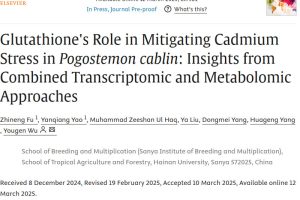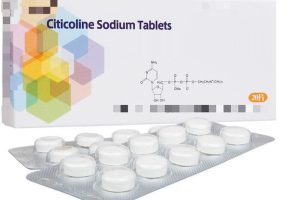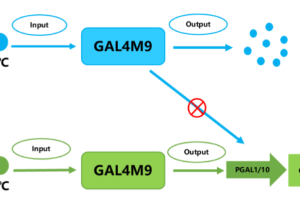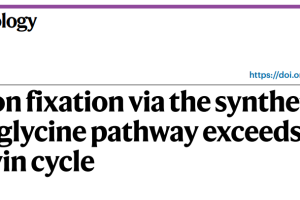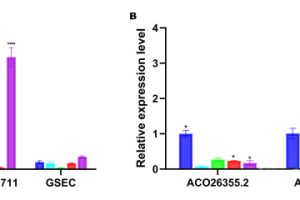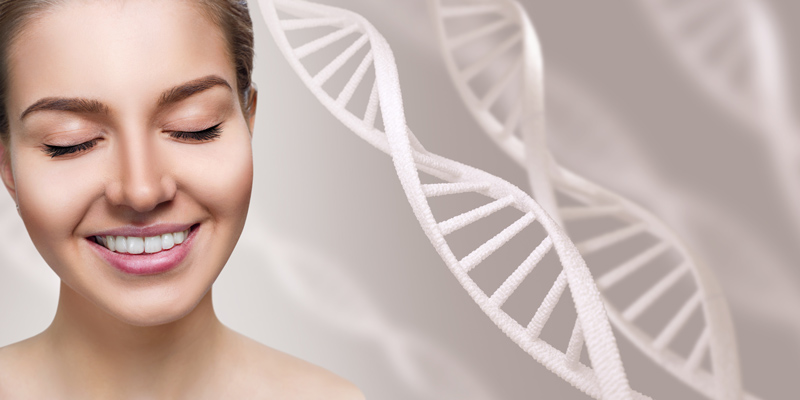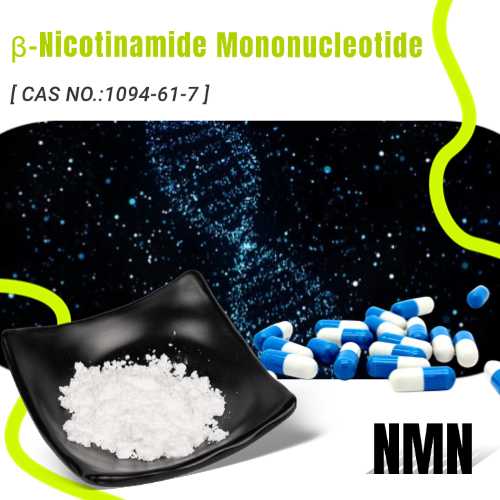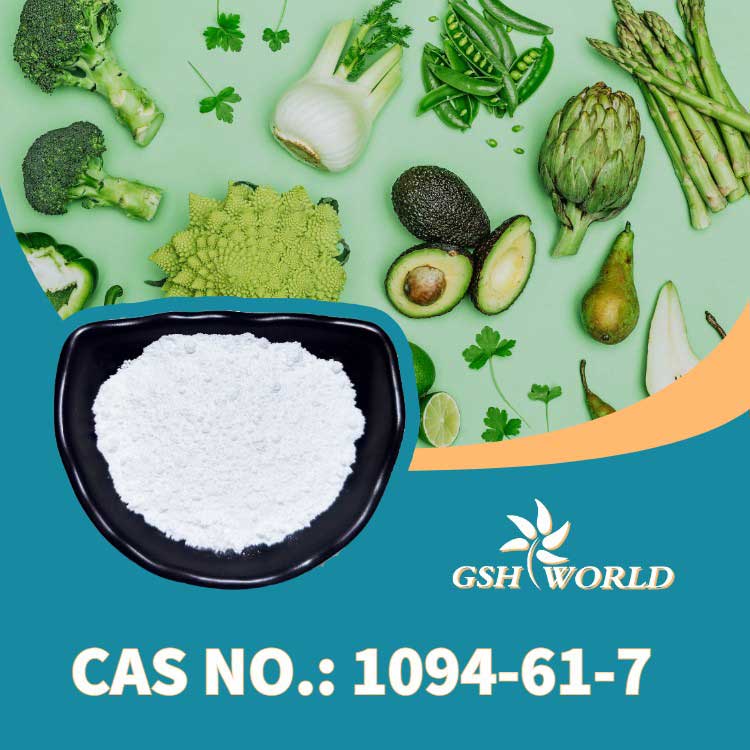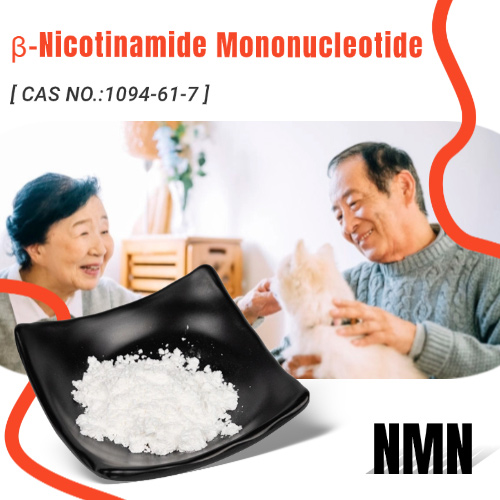Based on the anti-aging effects observed in preliminary studies, nicotinamide mononucleotide (NMN) is advertised as a source of youth.
However, there is no clinical evidence to support these claims.
Miracle medicine or just another fad?
Read on to learn and discover more.
What is NMN?
NMN belongs to the family of nucleotides, organic molecules found in most of the foods we eat.
Like all nucleotides, NMN is made up of 3 parts: a nitrogenous base, a sugar, and a phosphate group.
While most nucleotides are used to build DNA, NMN is used to make nicotinamide adenine dinucleotides (NAD) and to regulate energy balance.
The principal is used to create NMN as an intermediate step or “precursor” to NAD. In short: Higher NMN levels mean higher NAD levels.
NAD increases the body’s main energy currency (ATP), balances circadian rhythms, and can carry out hundreds of enzymatic reactions – many of which delay aging.
In many tissues, the level of NAD (especially its NAD+ form) naturally decreases with age.
supporter
- Retarding animal aging
- May improve diabetes and metabolic syndrome
- May support kidney and heart health
- More stable than nicotinamide ribose (NR)
- No side effects were observed
skeptic
- Unstudied in humans
- costly
- Oral forms may not be bioavailable
- Long-term safety unknown
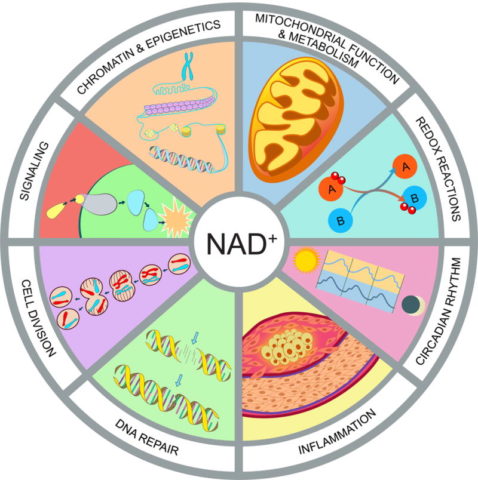
Food source
Since most human cells cannot import NAD directly, it must be created from the inside.
NMN, on the other hand, can quickly enter cells in the small intestine, liver, pancreas, and adipose tissue.
The mice absorb NMN from the small intestine into the bloodstream within 3-5 minutes. Within 15 minutes, NNN is distributed into the tissue and converted into NAD.
NMN is found in small amounts in some food sources, including:
- edamame
- broccoli
- cucumber
- cabbage
- avocado
- Tomato
Although trace amounts of NMN can be found in these vegetables, it is difficult to eat enough vegetables to effectively raise NAD levels.
Our bodies use NMN to make NAD, which is one of the main drivers of energy metabolism. NMN can be absorbed by the gut, but we only get it in trace amounts from food.
Potential benefits of NMN
With aging, NAD levels naturally decline. As a result, cells and organs begin to function less.
Low NAD levels are associated with a variety of age-related diseases. That said, research behind the health effects of NMN is particularly lacking.
So, is NMN a fountain of youth or just another anti-aging fad?
1) Anti-aging
David Sinclair, a geneticist at Harvard University, has proposed that increasing NAD could slow aging and delay age-related diseases in humans. Sinclair’s group led the NMN study under the assumption that NMN could raise NAD levels.
Sinclair has even applied for a patent on the NAD booster, which is currently sold by Elysium Health. The company was founded in 2014 by Sinclair’s former mentor, MIT biologist Leonard Guarente. They sell products that claim to increase NAD levels.
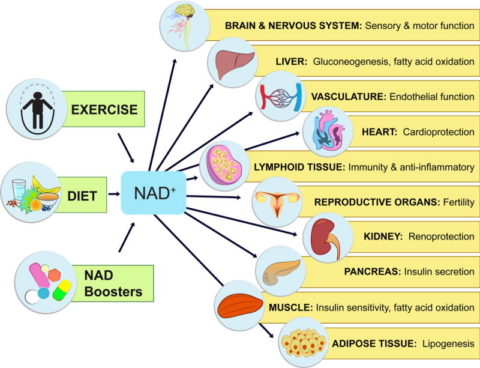
Sinclair believes there are mechanisms that could increase the amount of NAD in the human body and the associated health benefits.
Telomere length
Telomeres are long “tails” that repeat DNA code at the ends of chromosomes. Every time a chromosome copies itself, it loses some of its telomeres. Thus, as the organism ages, telomeres shorten, eventually leading to cell death.
NMN increased the length of telomeres in mouse hepatocytes.
Deacetylases (Sirtuins)
In mice, NMN enhances the activity of a family of molecules called deacetylases, which are involved in a complex anti-aging mechanism that scientists are only beginning to understand. NMN specifically increased the activity of SIRT1 gene.
Deacetylase protects against oxidative stress, DNA damage, and cellular aging. Low acetylase levels have been associated with aging and aging-related diseases, while high acetylase levels increase fertility in women.
In theory, NMN may slow down the aging process by lengthening telomeres and activating deacetylase. This has only been demonstrated in mouse and cell studies.
2) Diabetes
NMN supplementation in mice can help treat age – and diet-related diabetes. When given a single dose of NMN, the mice increased insulin secretion and increased insulin sensitivity to glucose response.
3) Metabolic syndrome
In a mouse study, oral NMN improved a number of health indicators, including weight gain, energy metabolism, physical activity, fat distribution, and vision.
This is a long-term study: laboratory mice usually survive only two years, but the mice were followed for a year. At high doses of NMN (300 milligrams per kilogram of body weight per day), mice lost 18 percent of their body weight without increasing exercise.
Interestingly, the young mice did not benefit. Older mice returned to “youthful” health, which may support claims about the anti-aging effects of NMN.
Mice that reached half their lifespan were lighter, had better energy metabolism, fat distribution and vision after consuming NMN.
4) Kidney damage
In another study, oral NMN improved kidney function and prevented kidney damage in aging mice. These effects may be attributed to increases in NAD and SIRT1, which activate anti-aging and anti-inflammatory pathways.
5) Heart health
In older mice, oral NMN restored the elasticity of capillary walls and reversed age-induced blood vessel damage. These mice showed improved blood flow and capillary repair compared to mice that did not receive NMN.
The new blood vessels actually sprouted in the skeletal muscle of old mice. After the experiment, their vascular system and endurance were similar to those of young mice.
In a similar and recent study, older mice that received NMN greatly improved blood flow to the brain.
It is known that blood flow to the brain is impaired in groups with high blood pressure, Alzheimer’s disease and stroke, so this result bodes well for NMN’s effect on these diseases.
Friedsch’s ataxia
One study investigated a mouse model of Friedsch’s ataxia, a rare inherited heart disease that appears in childhood. High doses of NMN (500 mg per kilogram of body weight) twice a week for six weeks improved the strength and function of the heart muscle compared to the control group.
In mice, NMN improves blood flow to the muscles and brain by promoting the growth of new capillaries and repairing existing capillaries.
6) Alzheimer’s disease
Reduced levels of NAD in Alzheimer’s disease. In two mouse studies on Alzheimer’s disease, both NMN and nicotinamide riboside (NR) reduced neuroinflammation and improved memory, learning, and motor control.
The decrease of SIRT3 gene activity may be related to the degeneration of brain tissue, and NMN supplementation can increase the activity of SIRT3 gene.
NMN also reduced levels of amyloid beta plaques in the brains of diseased mice. NR does not.
NMN’s superior performance may be attributed to its ability to cross the blood-brain barrier. Note, however, that NMN is injected under the skin, while NR is absorbed through the mouth.
In mice with Alzheimer’s disease, NMN can cross the blood-brain barrier, improve memory, and reduce amyloid beta plaques.
Limitations and Warnings
Regardless of Dr. Sinclair’s claims, and the general publicity surrounding anti-aging supplements, current NMN research is limited to animal studies.
Dr Sinclair’s motives are also questionable:
His research helped spark the anti-aging wave of resveratrol in the early 2000s, and he has financial interests in more than 20 companies.
In 2004, Sinclair formed a company called Sirtris Pharmaceuticals to market resveratrol supplements.
Four years later, Sirtris was sold to GlaxoSmithKline for $720 million.
In 2010, GlaxoSmithKline stopped the study of resveratrol (SRT501) after they found some discouraging results and even some side effects in humans.
Finally, the higher manufacturing cost of NMN compared to NR brings potential disadvantages to customers.
Nicotinamide ribose (NR) vs. nicotinamide mononucleotide (NMN)
Nicotinamide ribose (NR) is another intermediate in NAD biosynthesis. Unlike NAD, NR is commonly consumed in the diet, mainly in milk, and is more easily absorbed by cells than NMN.
Chemically, NR is an NMN molecule that lacks a phosphate group.
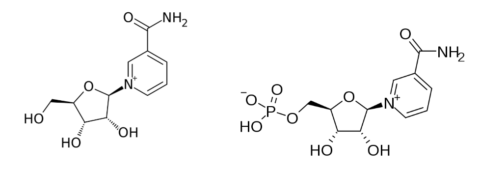
Clinical studies and known effects on humans
Human studies of NR have been done in comparison to NMN. NR is currently marketed by a number of companies, including Elysium Health, and is usually marketed as a supplement either alone or in combination with the antioxidant santalostilbene, a polyphenol found in blueberries.
Sandalwood is closely related to resveratrol, but it is more bioavailable.
Completed studies have confirmed that NR is safe and capable of increasing NAD + in humans.
More than 20 clinical studies are underway evaluating specific health benefits of NR in a variety of health conditions.
Tissue and cell penetration
NR is unstable in the blood, meaning it quickly breaks down into other compounds and is not detectable in mouse or human plasma even at very high doses.
The use of NR alone or in combination with Zindanqi can increase the NAD in the blood.
The absorption and detection time of NMN in animal blood is very short. It then penetrates into cells and tissues. Therefore, it may be more efficiently distributed throughout the body than NR.
Which is better, NMN or NR?
It is difficult to determine whether NMN or NR is more effective: they have overlapping effects in enhancing NAD and activating deacetylated proteins, but human studies on NMN are lacking. However, some mouse studies have shown that NMN is superior to NR.
NMN can be absorbed and transported throughout the body more efficiently than its close cousin nicotinamide riboside (NR). However, human studies are lacking.
NMN safety and side effects
Keep in mind that the safety profile of NMN is relatively unknown due to the lack of well-designed clinical studies.
The side effects listed below are not absolute, and you should talk to your doctor about other potential side effects based on your health and possible drug or supplement interactions.
security
NR is generally considered safe by the FDA. Although NMN is already on the market, it has not yet been evaluated.
Several studies are currently underway to determine the safety of NMN as a nutritious food for humans.
The Phase 1 study began in 2016 to evaluate the safety of NMN and its time course in the blood.
Another large study, involving a group of 50 women with high blood sugar, assessed BMI and blood triglycerides.
In a long-term study in mice, NMN was taken orally at doses of 100 and 300 mg per kilogram of body weight per day for up to 1 year – much higher than the doses advertised for use in humans. No signs of side effects or toxicity.
Cancer risk
In Sinclair’s study, the effect of NMN on angiogenesis (the growth of new blood vessels) only restored the blood vessel health of old mice to that of normal young mice.
In this or other long-term animal studies of NMN, there was no sign of increased cancer risk. However, more research should look at the effect on cancer risk.
Side effect
NR and NMN have fewer adverse side effects than other NAD precursors. For example, niacin (vitamin B3), the most widely used NAD precursor, can cause a range of side effects, including facial flushing when niacin is used at high doses.
The safety of NMN in humans is unknown. According to animal studies, it does not cause adverse effects even when taken in high doses for long periods of time.
NMN dosage and supplement form
NMN dose
Because NMN is not approved by the FDA in any case, there is no official dose. Unofficial doses have been determined by users and supplement manufacturers based on trial and error.
Talk to your doctor about whether NMN can be used as a supplement for your case and what dosage should be taken.
In mouse studies, NMN was administered in doses of several hundred milligrams per kilogram of body weight per day, either through feeding tubes or by adding it directly to the animals’ water.
This dose is impractical for humans: using a common conversion factor, the corresponding dose for a 60 kg adult can easily exceed 2 grams per day (2,000 mg per day).
The dosage in human supplements is around hundreds of milligrams per day. For example, in a study of 50 women, the dose tested was 125 mg of NMN used twice daily for 8 weeks.
David Sinclair publicly credits the benefits of NMN for his youth and good health, reportedly taking 1 gram of NMN and 0.5 gram of resveratrol daily, but we should take his claims with a grain of salt.
NMN supplement form
NMN supplements are not approved by the FDA for medical use. Often, regulatory agencies fail to ensure the quality, safety, and efficacy of supplements. Talk to your doctor before supplementing.
NMN is currently sold in pill and powder form.
Companies selling NMN claim that oral NMN can effectively boost NAD. The claim is based on the discovery of Slc12a8, a protein that helps absorb NMN in the gut.
A sublingual formulation of NMN, which they claim is more likely to be absorbed into the bloodstream.
Sum up
Nicotinamide mononucleotide (NMN) is a precursor of NAD, which is claimed to have anti-aging effects. It protects against oxidative stress and cell damage by activating deacetylase and lengthening telomeres.
In turn, NMN may improve brain, heart, and metabolic diseases associated with aging.
Its potential benefits have not been demonstrated in clinical trials. NMN is similar to nicotinamide riboside (NR). It is said to have better absorption and effectiveness, but research is limited.
NMN can be taken as a pill/powder, orally or under the tongue. Clinical studies are currently underway using about 250 mg per day.


